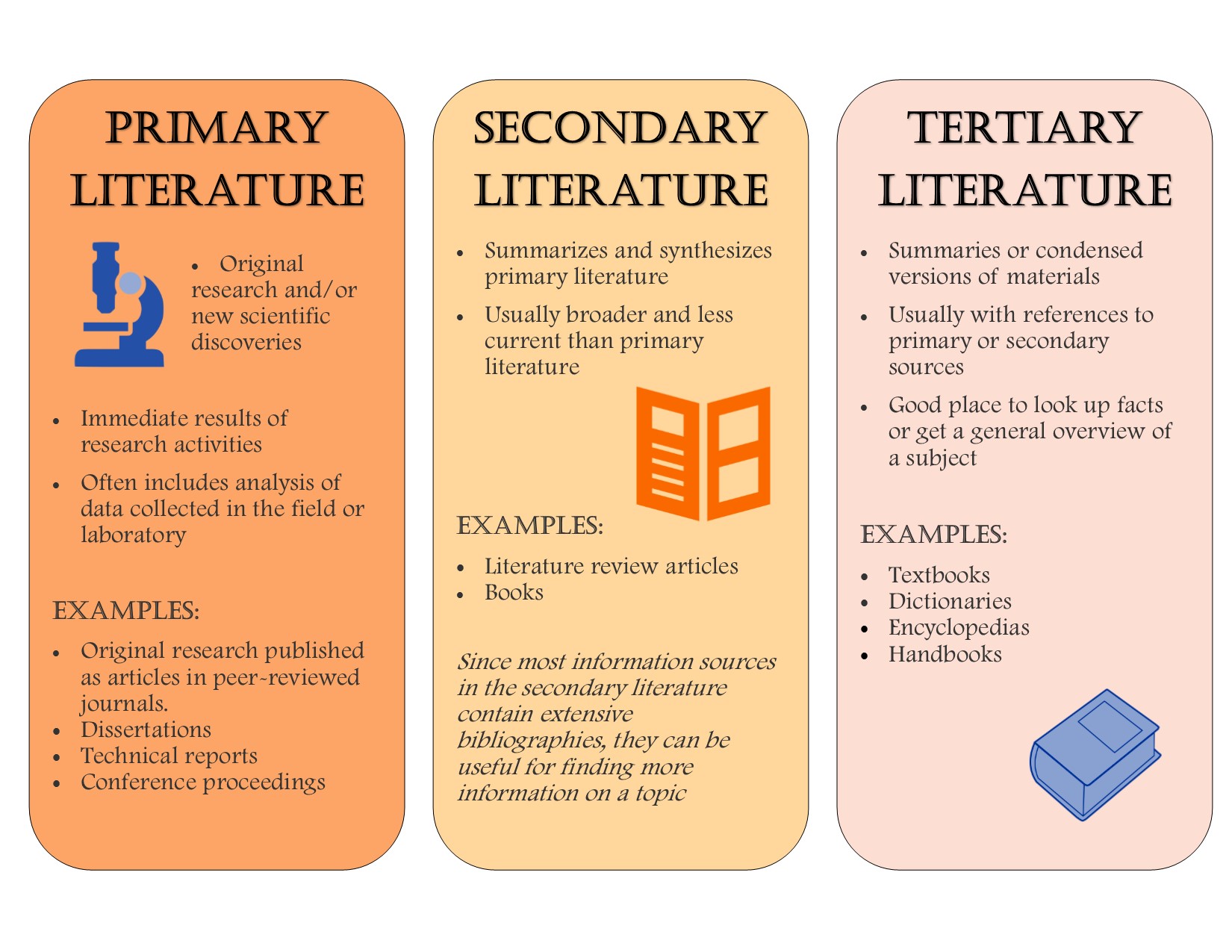Primary, Secondary, and Tertiary Literature

Graphic adapted from UC San Diego: http://ucsd.libguides.com/MCWP/sources
Primary Literature
Primary Literature in the Sciences
In the sciences, the primary literature presents the immediate results of research activities. It often includes analysis of data collected in the field or laboratory. Primary literature presents original research and/or new scientific discoveries.
Examples of Primary Literature in the Sciences:
- Original research published as articles in peer-reviewed journals.
- Dissertations
- Technical reports
- Conference proceedings
Identifying Primary Literature in the Sciences
When looking at a journal article to determine whether or not is it primary literature, look for the following common components of a primary research article:
- Abstract
- Introduction
- Methods or Materials and Methods
- Results
- Discussion
- Conclusions
- References
Secondary Literature
Secondary Literature in the Sciences
The secondary literature in the sciences summarizes and synthesizes the primary literature. It is usually broader and less current than primary literature. Since most information sources in the secondary literature contain extensive bibliographies, they can be useful for finding more information on a topic.
Examples of Secondary Literature in the Sciences:
- Literature review articles
- Books
Tertiary Literature
Tertiary Literature in the Sciences
Tertiary literature presents summaries or condensed versions of materials usually with references to primary or secondary sources. They can be a good place to look up facts or get a general overview of a subject.
Examples of Tertiary Literature in the Sciences:
- Textbooks
- Dictionaries
- Encyclopedias
- Handbooks